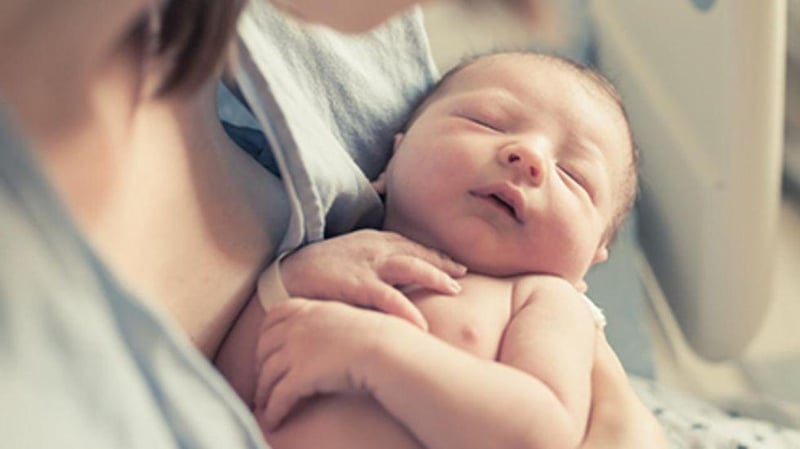Using the RefillRx mobile app? Then you will love our new, ENHANCED Sentry Drug Center mobile app.
Quickly request refills or login and manage your prescriptions on the go!
Available on both iTunes and Google Play.
Call or Visit for All of your Vaccination Needs!
Get Healthy!

- Amy Norton
- Posted April 11, 2023
Pandemic's Effect on U.S. Birth Rates May Have Depended on Politics
The "baby bust" that hit the United States during the first year of the COVID pandemic did not affect all states equally -- with states that were more racially diverse or more "blue" seeing bigger drops in their birth rates.
That's among the findings of a new study that probed a now well-documented phenomenon: The pandemic triggered a drop-off in the U.S. birth rate, as it did in many other countries.
That was the national picture at least.
But the United States is geographically huge and diverse in many ways, said Linda Kahn, the senior researcher on the study and an assistant professor at NYU Grossman School of Medicine, in New York City.
And as the new study demonstrates, the pandemic's effects on birth rates differed from state to state.
On the national level, Kahn's team found what others have: Nine months into the pandemic, the U.S. birth rate was down compared to the year before -- with 18 fewer births per month for every 100,000 women of childbearing age.
But by the pandemic's "second wave," in 2021, the national birth rate had gotten back on track: That is, it returned to the declining trajectory it had been on in 2019.
A deeper look, though, showed that states varied widely in how the early pandemic affected births.
New York state, for example, saw a huge drop: Pre-pandemic, births had been declining by about 4 fewer monthly births per 100,000 women of reproductive age. After the pandemic's first wave, that plummeted to 76 fewer monthly births per 100,000 women.
A number of other states, many in the Northeast, saw substantial drops, too.
At the opposite end of the spectrum were states such as Idaho, Montana and Utah, where birth rates actually increased after the pandemic's first wave -- by up to 56 additional births each month per 100,000 women of childbearing age.
According to Kahn, it's easy to see how births would tumble in a state like New York -- where New York City was the epicenter of the pandemic's chaotic and deadly early days.
But overall, the study found, states' birth rate changes depended not so much on the severity of their COVID outbreaks, per se, but on other factors.
States that were harder-hit by unemployment saw bigger birth-rate drops during the first wave, as did states that had started out with more income inequality.
Similarly, states with more racial diversity had greater declines in birth rates compared to states with largely white populations.
Kahn said that race is likely a proxy for other things, as people of color in the United States are more likely to live below the poverty line and face other economic hardships, like unstable housing, than white Americans. And all of those problems, she pointed out, were worsened by the pandemic.
When people cannot afford the rent or bills, pandemic or not, they are unlikely to start planning a family, Kahn said.
But one major factor in states' birth rates was not economic, but political: In states where the majority of registered voters were Democrats, birth rates fell by an average of 24 monthly births per 100,000 after the first wave. That compared with only one fewer birth per 100,000 in majority-Republican states.
By the second wave in 2021, however, blue and red states were on par with each other, on average.
It's hard to say exactly why. "Political leanings are essentially a proxy for everything," Kahn said.
Democrats may have made different choices about family planning because they took the pandemic more seriously, but, Kahn said, this study had no information on people's attitudes.
And it's difficult to separate individuals' beliefs from wider factors: Blue states are also more racially diverse, have more big cities that were hammered by the pandemic, and they typically laid down more restrictions early in the pandemic to contain the spread of COVID-19.
Melissa Kearney is a professor of economics at the University of Maryland. She said the new findings are "largely consistent" with an analysis she did, published last year as a working paper by the National Bureau of Economic Research.
The initial baby bust, Kearney said, varied widely by state. And while birth rates did rebound pretty quickly -- later in 2020 -- the comeback also varied by state.
"Fertility rates fell more in states with a greater increase in unemployment and a larger drop in spending, and rebounded more in places with a greater improvement in the labor market and resumption of household spending," Kearney said.
To Kahn, the pandemic essentially highlighted the factors that have always driven the U.S. birth rate -- essentially whether families have the economic security, stable housing and hope for the future that it takes to raise children.
And, she said, the fact that the national birth rate has been falling for years should be a concern.
"Birth rates are the canary in the coal mine," Kahn said. "What does our declining birth rate say about our country's ability to support families?"
The findings were published April 11 in the journal Human Reproduction.
More information
The National Academies has more on the pandemic baby bust and rebound.
SOURCES: Linda Kahn, PhD, MPH, assistant professor, pediatrics and population health, NYU Grossman School of Medicine, New York City; Melissa Kearney, PhD, professor, economics, University of Maryland, College Park; Human Reproduction, April 11, 2023, online
